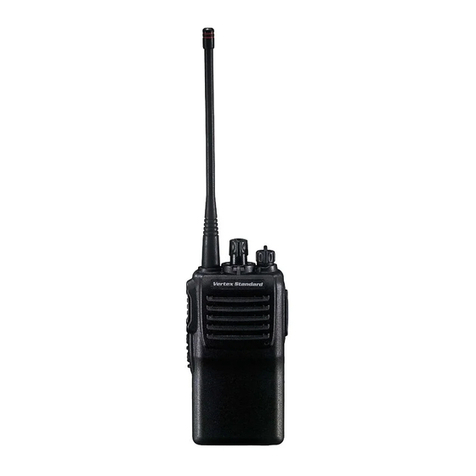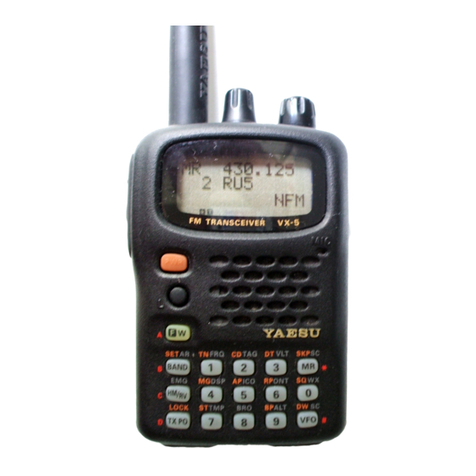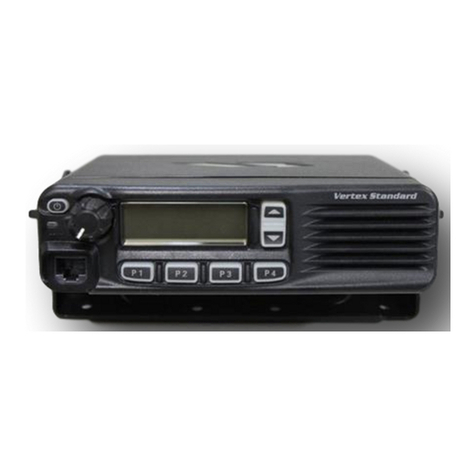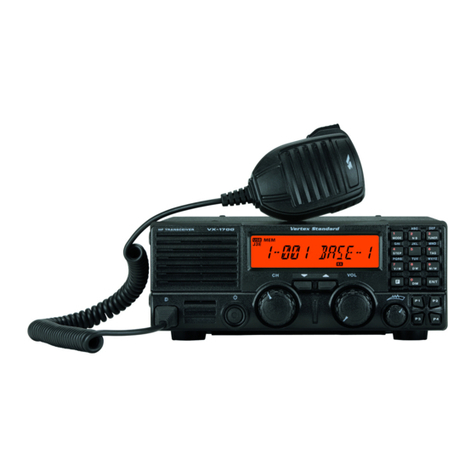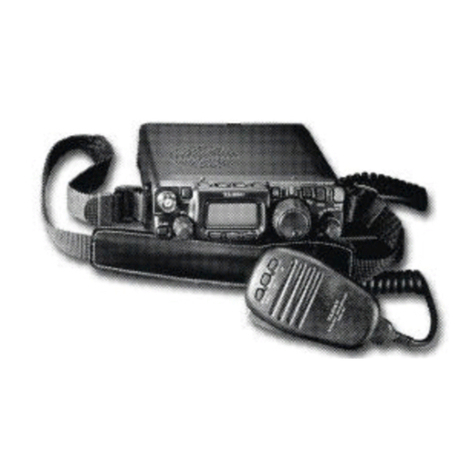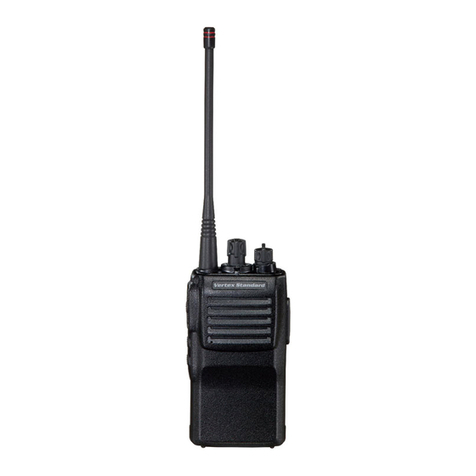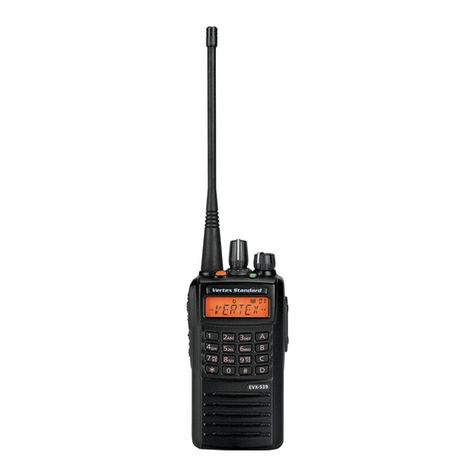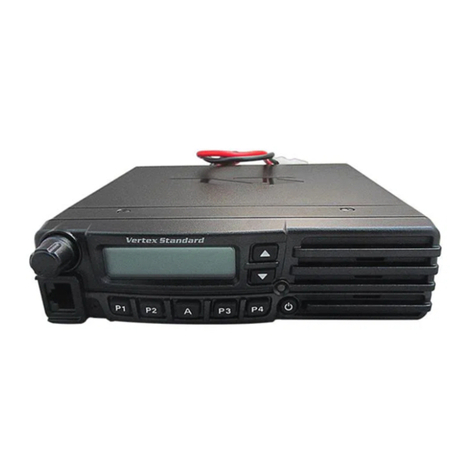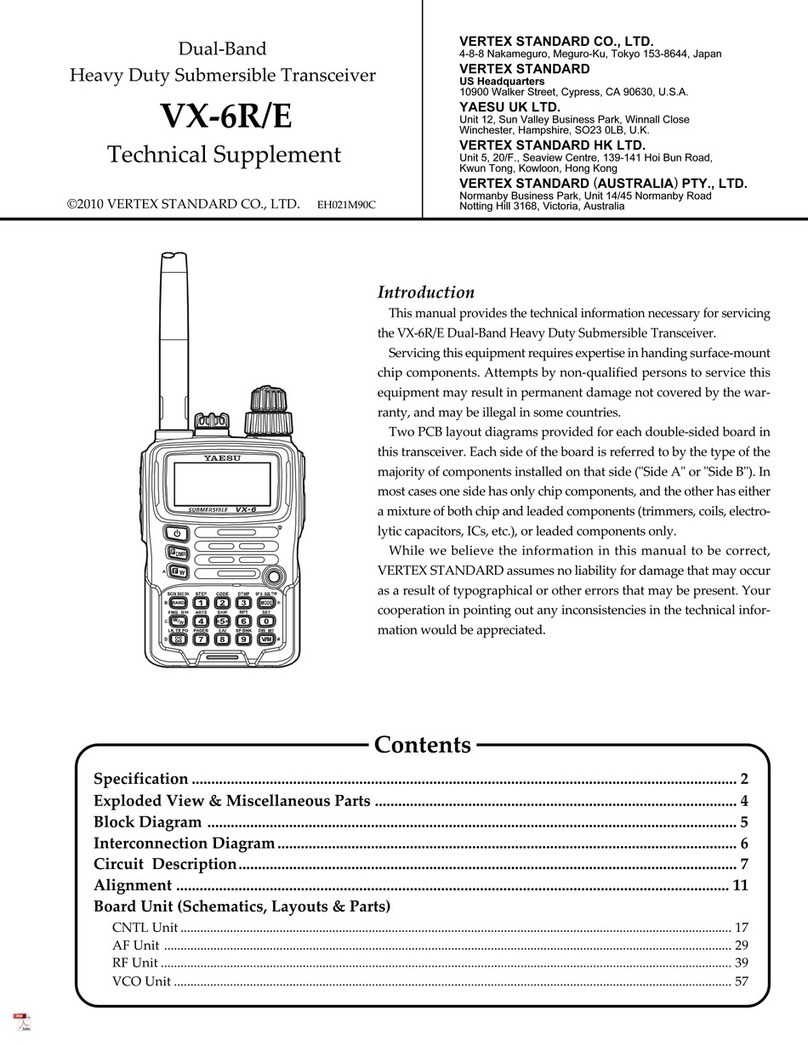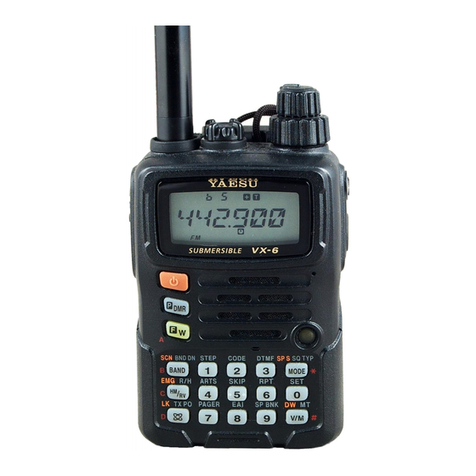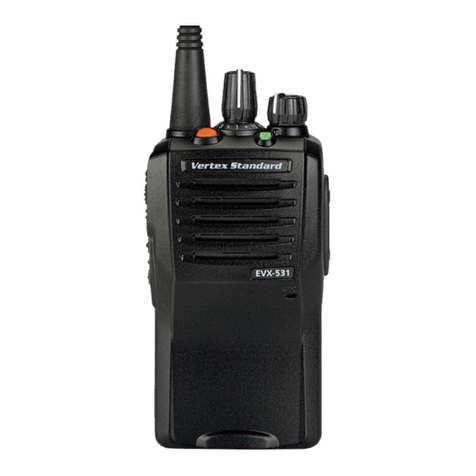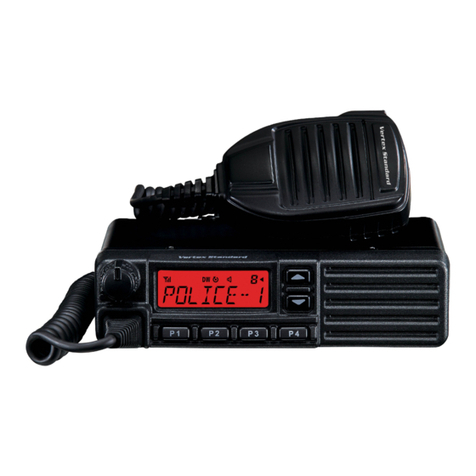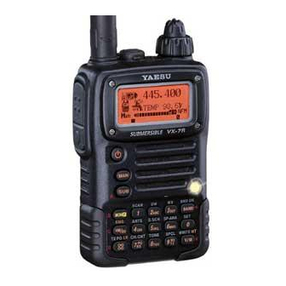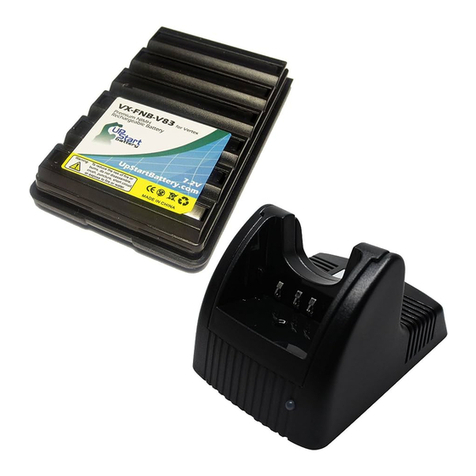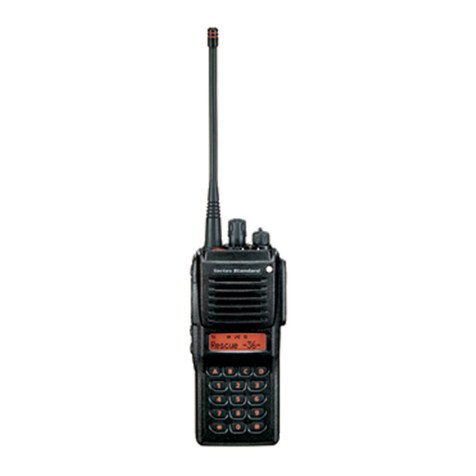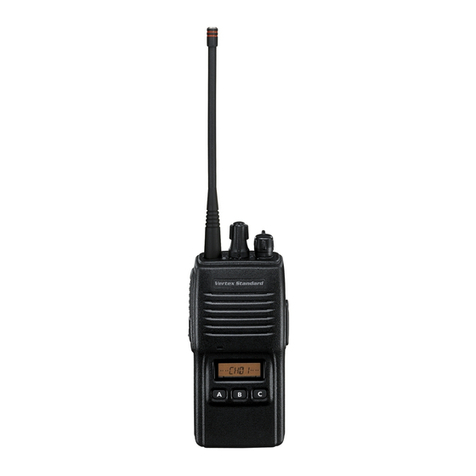
2
VX-510 OPERATING MANUAL
SPECIFICATIONS
General VHF (Low Band) VHF (High Band) UHF
Frequency range (MHz): 29.8 – 38 MHz (vers.A) 146 – 174 MHz 450 – 488 MHz
38 – 50 MHz (vers.B)
Channels: Up to 32 Up to 32 Up to 32
(simplex or semi-duplex) (simplex or semi-duplex) (simplex or semi-duplex)
Maximum Channel Spread: 8.3 MHz (vers. A) 28 MHz 20 MHz
12 MHz (vers. B)
Minimum Channel Spacing: 20 kHz
(12.5 kHz optional)
15/30 kHz 12.5/25 kHz
Programming Channel Step: 5/6.25 kHz 5/6.25 kHz 10/12.5 kHz
Emission Type: 16K0F3E
(11K0F3E optional)
11K0F3E/16K0F3E 11K0F3E/16K0F3E
Supply Voltage: 7.2 V DC 10% 7.2 V DC 10% 7.2 V DC 10%
Current Consumption: 50 mA (stby, saver off) 50 mA (stby, saver off) 50 mA (stby, saver off)
19 mA (stby, saver on) 19 mA (stby, saver on) 19 mA (stby, saver on)
200 mA (receive) 200 mA (receive) 200 mA (receive)
2000 mA (transmit) 2000 mA (transmit) 2000 mA (transmit)
Case Size(WxHxD): 59x149x39mm 59x149x39mm 59x149x39mm
Weight (approx.): 570 grams 570 grams 570 grams
Receiver
Receiver Circuit Type: Double-conversion Double-conversion Double-conversion
Superheterodyne Superheterodyne Superheterodyne
Intermediate Frequencies: 21.6 MHz (ver. A) 21.6 MHz & 455 kHz 47.9 MHz & 455 kHz
16.9 MHz (vers.B)
& 455 kHz
12-dB SINAD Sensitivity: better than 0.20µV better than 0.25µV better than 0.25µV
20-dB Noise Quieting: better than 0.30µV better than 0.35µV better than 0.35µV
Squelch Threshould: better than 0.18µV better than 0.20µV better than 0.20µV
Adjacent Channel Selectivity: 75 dB 65/75 dB 65/75 dB
Image Rejection: 80 dB 75 dB 75 dB
Intermodulation Response: 70 dB 72 dB 72 dB
Hum & Noise: 50 dB 44/50 dB 40/45 dB
Audio Response:
+3/–8 dB from the 6 dB/oct. +3/–8 dB from the 6 dB/oct. +3/–8 dB from the 6 dB/oct.
De-emphasis curve De-emphasis curve De-emphasis curve
AF output (for 5% THD): 0.5 watts @16 Ω0.5 watts @16 Ω0.5 watts @16 Ω
Transmitter
Power Output: 5W/1W 5W/1W 5W/1W
Frequency Stability: ±10 ppm ±2.5 ppm ±2.5 ppm
Modulation System: variable reactance variable reactance variable reactance
Maximum Deviation: ±5 kHz
(±2.5 kHz optional)
±2.5/±5 kHz ±2.5/±5 kHz
Audio Response: TIA/EIA-603 3.2.6 TIA/EIA-603 3.2.6 TIA/EIA-603 3.2.6
FM Hum and Noise: better than
–
50 dB better than
–
45/50 dB better than
–
45/50 dB
Spurious Emissions: 60 dB below carrier 60 dB below carrier 60 dB below carrier
AF Distortion (@ 1 kHz): < 5% @60 % modulation < 5% @60 % modulation < 5% @60 % modulation
Microphone Type: 2-k Ωcondenser 2-k Ωcondenser 2-k Ωcondenser
Specifications may be subject to change without notice or obligation.
